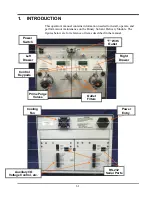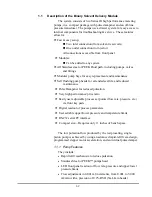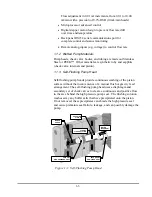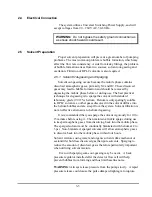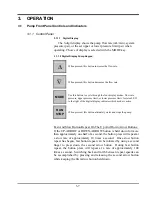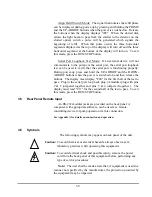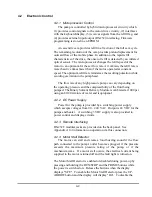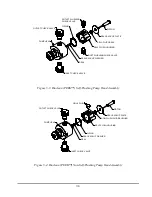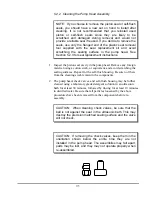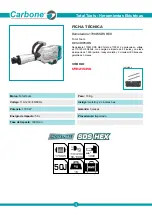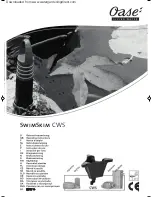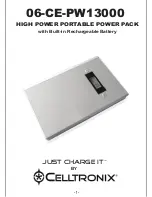
3-4
2.5.2 Cavitation
Cavitation occurs when inlet conditions restrict the flow of solvent
and vapor bubbles are formed during the inlet stroke. The key to
preventing cavitation is to reduce inlet restrictions. The most common
causes of inlet restrictions are crimped inlet lines and plugged inlet
filters. Inlet lines with tubing longer than 48" (120 cm) or with tubing
of less than 0.085" (2 mm) ID may also cause cavitation.
Placing the solvent reservoirs below the pump level also promotes
cavitation. The optimal location of the reservoirs is slightly above the
pump level, but it is adequate to have them on the same level as the
pump.
2.5.3 Filtration
Solvent filtration is good practice for the reliability of the Binary
Solvent Delivery Module and other components in a HPLC system.
Solvents should always be filtered with a 0.5 micron filter prior to use.
This ensures that no particles will interfere with the reliable operation of
the piston seals and check valves. Solvents in which buffers or other salts
readily precipitate out will need to be filtered more often. After filtration,
the solvents should be stored in a closed, particulate-free bottle.
2.5.4 Initial system pressurization (Daily)
IMPORTANT: To maximize accuracy at all pressures and flows
this pump contains a pulse damper for each solvent used. It is
important that the pump be brought to pressure with both pumps
running to insure that each pulse damper has the correct solvent in it.
It is recommended that the flow be set to the operational flow with an
equal mixture of the two solvents. Once the system has reached a
constant pressure the composition should be set to the initial
conditions.
2.6 Instrument
Installation
2.6.1 Mobile Phase Reservoirs
The mobile phase reservoir should be placed at the same level or
slightly higher than the pump, never below the pump, and the inlet
tubing should be as short as practical. These steps minimize pressure
losses on the inlet side of the pump during refill and help to avoid
bubble formation. These steps are particularly important when using
high vapor pressure solvents (hexane, methylene chloride, etc.).
Mobile phases should be degassed, filtered and covered. (See Section
2.4.)



